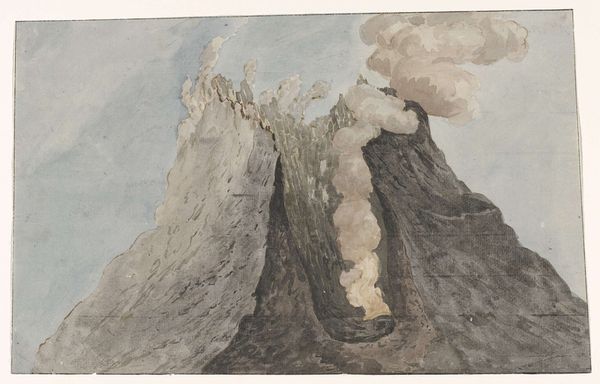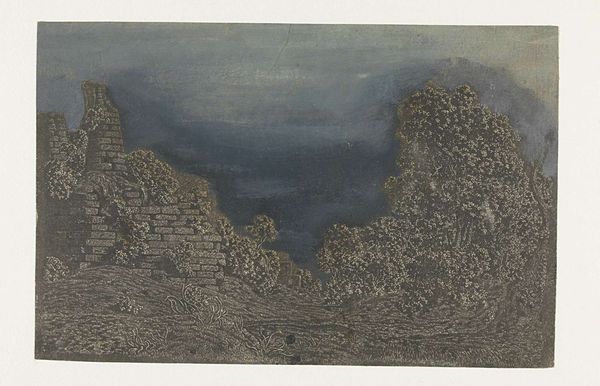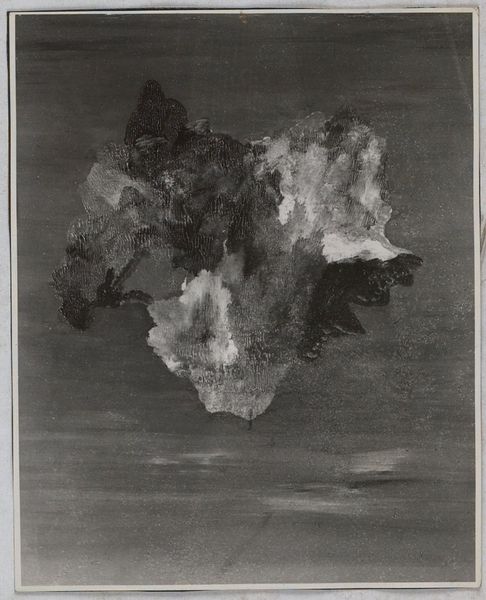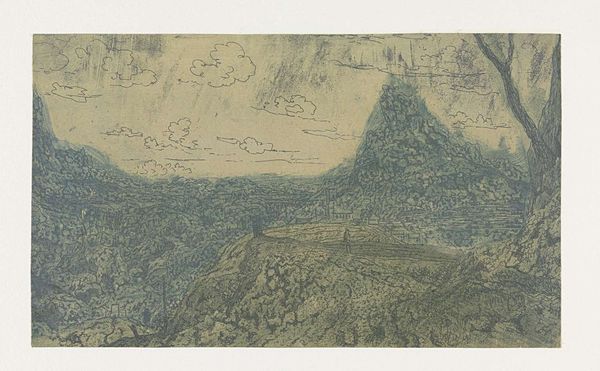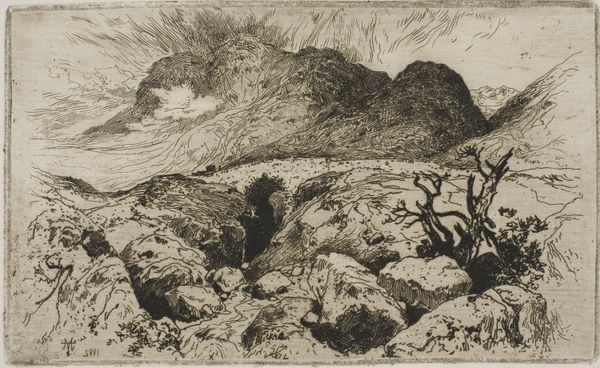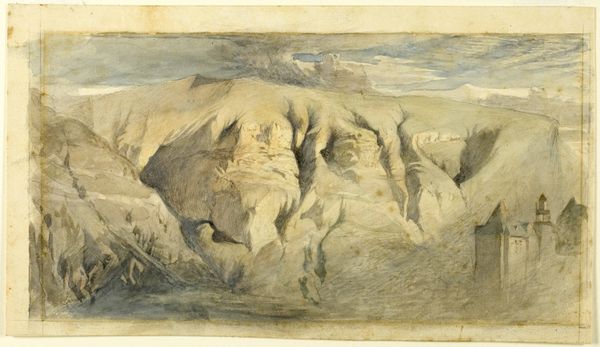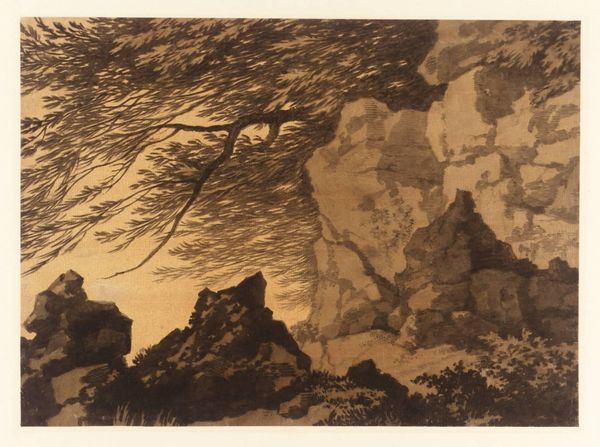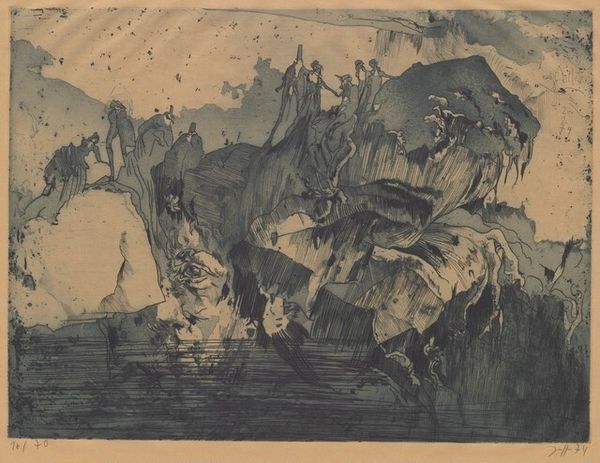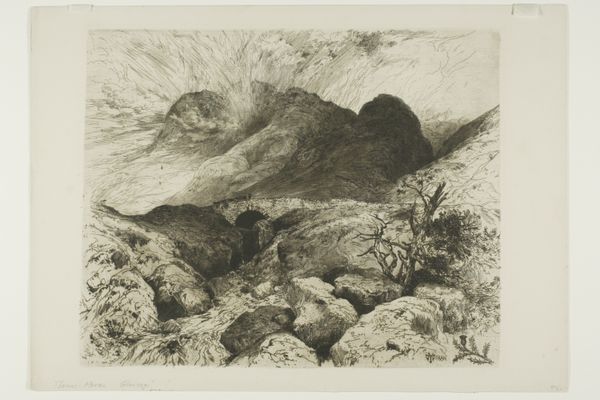
Dimensions: height 202 mm, width 303 mm
Copyright: Rijks Museum: Open Domain
Willem Carel Dierkens made this watercolor drawing of the crater of Mount Etna in Italy in the 1770s. It gives us insight into the late 18th-century fascination with the sublime—the sense of awe and terror inspired by nature's power. Etna, a symbol of that raw, untamed force, became a popular subject. Volcanic landscapes were highly sought after in a time when art academies encouraged artists to depict not just beauty, but also the dramatic forces shaping the world. Dierkens’ somewhat crude but evocative drawing invites us to consider the social status of landscape imagery at that time. Was it a tool for scientific understanding, or a way to fuel the romantic imagination? To answer this we need to consider the publications of the era, the travel accounts of those who visited these sites, and the market for landscape paintings and prints. The history of art is more than just the history of images.
Comments
No comments
Be the first to comment and join the conversation on the ultimate creative platform.
